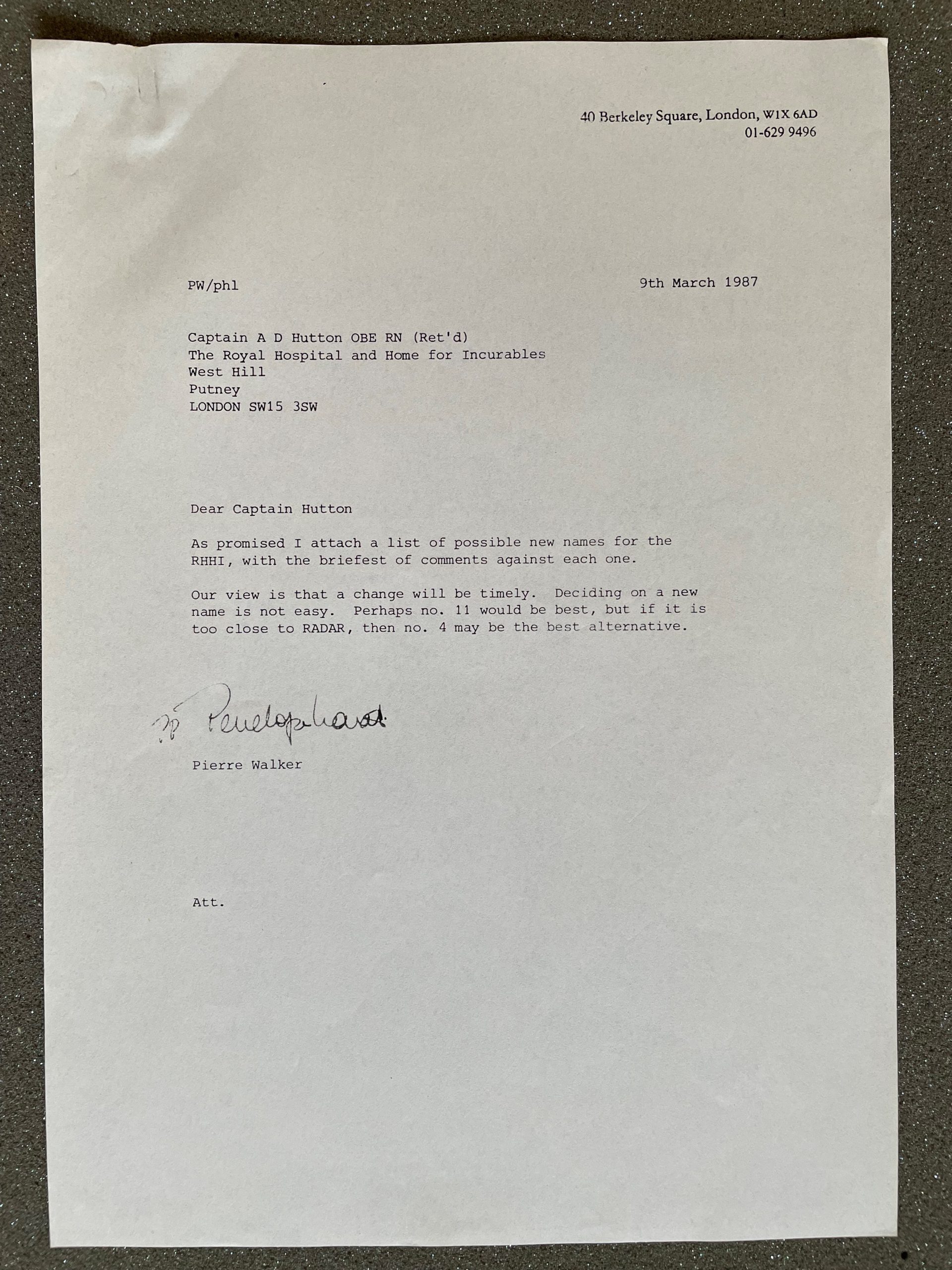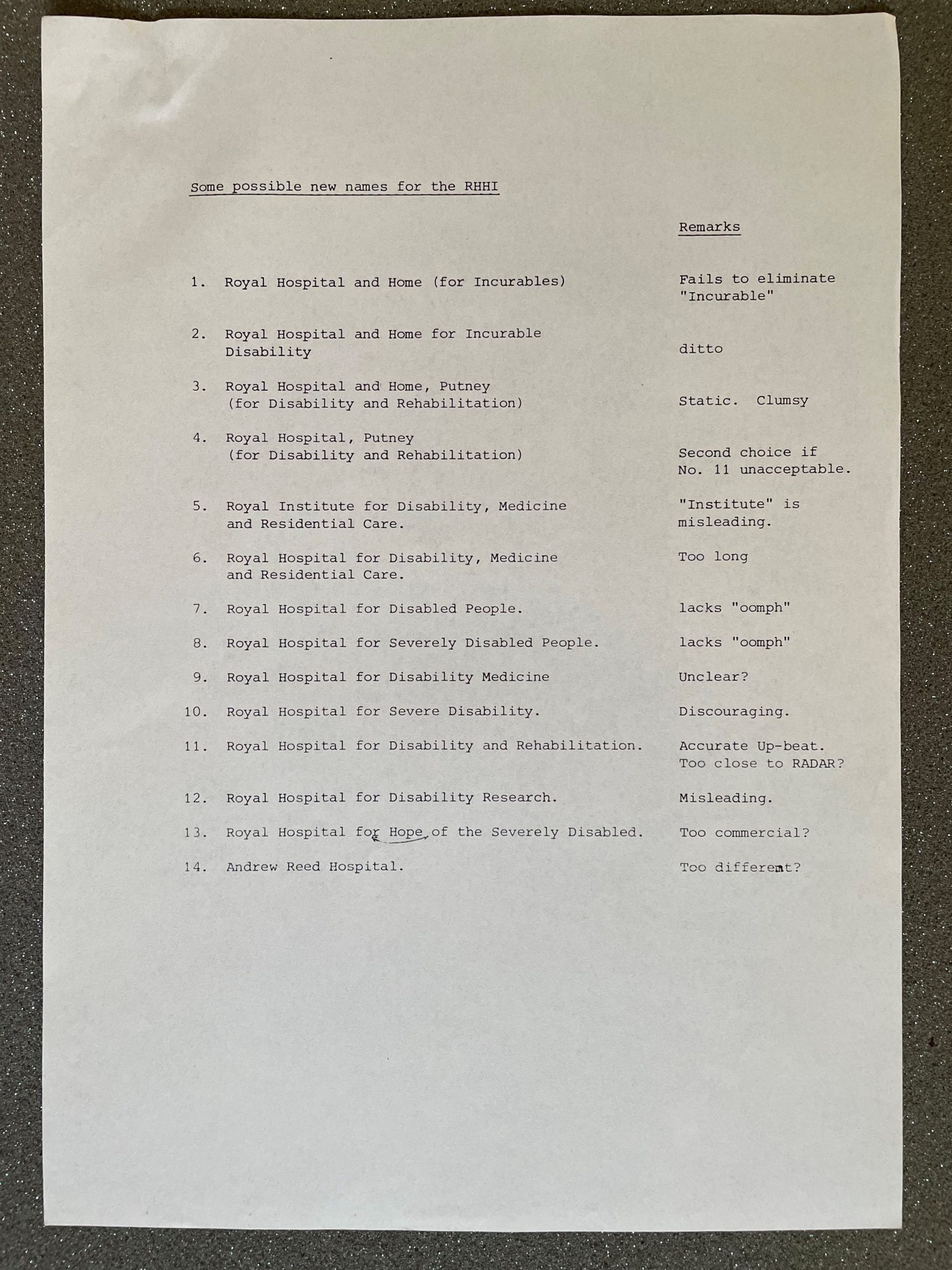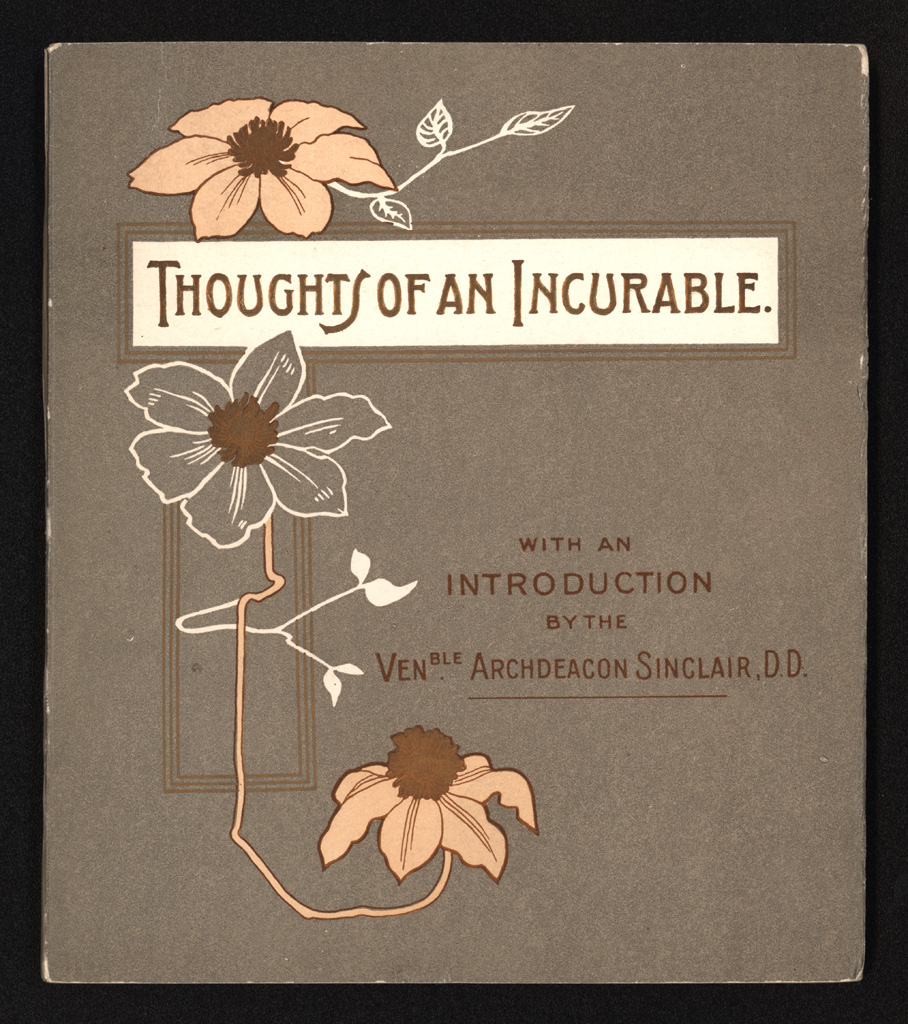Fun facts and stories we’ve come across at the RHN!
Fun stories at the RHN
Q the horse


Bird of prey


Sox the cat


New scrubs
The Scrubber is an organisation in South West London with a team of volunteers who sew and distribute scrubs to hospitals and healthcare providers. According to their website, they have now provided over 26,000 items across central and southwest London and the RHN has recently received a very kind donation.

The Putney Chiefs
The RHN even has its band! Staff members get together regularly to perform as The Putney Chiefs!
Name changes
The RHN has had a long history of name changes! According to a blog post circulated by our former archivist Chris Olver in June 2020 and written by Anna Harlow, there is quite a story here:
“Established in 1854, the RHN was originally known as the Royal Hospital for Incurables. The hospital’s founder Reverend Andrew Reed gave the hospital its ‘Royal’ title optimistically and a little prematurely. The Prince of Wales didn’t formally become the hospital’s patron until 1880, nearly 26 years later.”
The hospital first changed its name to the Royal Hospital and Home for Incurables in 1917, taking in individuals that other hospitals and homes couldn’t cope with and didn’t have the resources to look after. The term ‘incurables’ slowly became an outdated term and became a point of discussion. By 1986 the hospital was keen to drop the ‘Incurables’ title. You can see from the image below some of the possible name changes considered with a few interesting comments by the Hospital Secretary, Captain A D Hutton: some of the suggestions lack ‘oomph’, ‘being misleading’ or ‘failing to eliminate incurable’:
We also have a copy of a letter in our archives from the Private Secretary to the Prince of Wales asking that the term be removed from the hospital’s name in January 1987. After much discussion, the hospital was renamed the Royal Hospital and Home, Putney in 1988.”
In the early 90s, the trustees began to discuss a name that better reflected the work that the hospital specialised in and finally in 1995 it became the Royal Hospital for Neuro-disability, or the RHN as we now know it today!
The board minutes in the archive from 1987 contained a list of all the possible name changes. Look at these for some rather frank comments noted besides all the options


Some interesting facts from our archive
The process of admission to the hospital from 1854 to 1951 was through election by subscribers. Subscribers to the charity could purchase votes and decide which of the proposed candidates should be admitted to the hospital. Polling cards were sent out with details of the candidate’s condition and prominent supporters. Applicants and their supporters were also known for canvassing for votes, with around 1500-2000 votes needed to top the poll and guarantee entry.



View covers here





